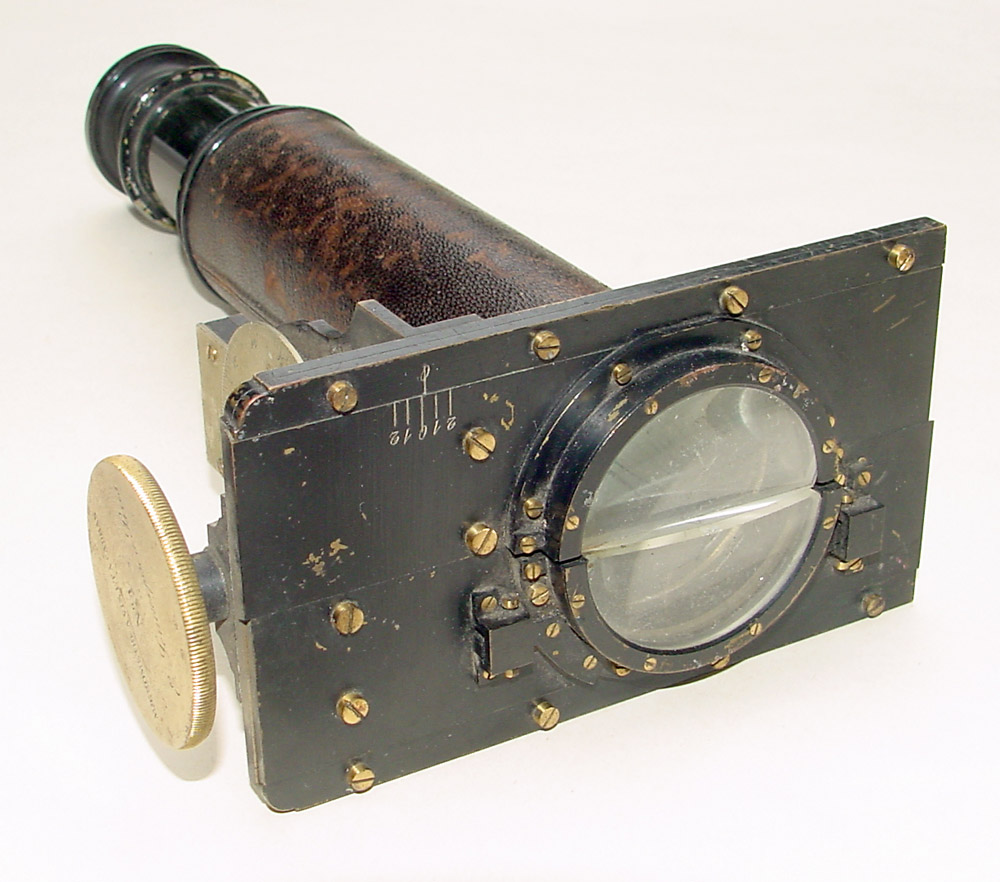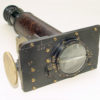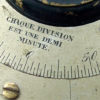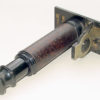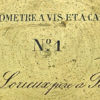A DIMINUTIVE HAND-HELD SPLIT-LENS RANGEFINDING TELESCOPE
Stock Number: 9171
$2950.
For sale, antique 19th century French split-lens telescope. The objective lens itself is split into two semicircular segments mounted independently and driven in opposite directions by long screw micrometer gearing, with geared readout wheel graduated 0(0.5)60 twice and labeled "1 Degre" and with a note that each division represents one-half arcminute (of angular separation between the images). A simple graduated scale to the front indicates the coarse lens separation in degrees (0±2).
Dimensions
7-3/4 inches (20 cm) closed
Circa
Third quarter 19th century
Country of manufacture
France
Description
A DIMINUTIVE HAND-HELD SPLIT-LENS RANGEFINDING TELESCOPE, French, c. third quarter 19th century, finely signed “Micrometre a vis et a cadran, No. 1, E. Lorieux pere a Paris” and “Lorieux, Passage Dauphine 13, Paris.” With an overall length of 7-3/4″ (20 cm), extending to 9-1/4″ by single drawtube, the telescope has erecting optics with a 1-3/4″ diameter objective. The main tube is leather bound and the brass is generally blackened to minimize reflections. The objective lens itself is split into two semicircular segments mounted independently and driven in opposite directions by long screw micrometer gearing, with geared readout wheel graduated 0(0.5)60 twice and labeled “1 Degre” and with a note that each division represents one-half arcminute (of angular separation between the images). A simple graduated scale to the front indicates the coarse lens separation in degrees (0±2). The front is technically impressive, the blackened brass contrasting with dozens of bright lacquered brass mounting screws in a variety of sizes. Condition is good and functional, noting scuffing to the leather and a few scratches to the lens.
In use each half of the objective forms its own image, so one sees any object double. By adjusting the physical separation of the lenses, one can align the two images with the two ends of an object of known height or length, and thus know the range, the distance away. Thus one rather easily and accurately keeps station at sea, or determines the speed of gaining or losing on an enemy vessel, or time to landfall.
Edmond Lorieux was apparently trained by Gambey, and c. 1845 established what became a very important manufactory of navigation instruments. He was succeeded by Hurlimann, then by Ponthus and Therode, then Ponthus, and finally Lepetit (see Marcelin). We have catalogued one other micrometric telescope by Lorieux (pere), that one much larger (22″ long extended), and labeled a bit differently “Micrometre Lugeol, a cadran de Lorieux,” i.e., the Lugeol system, with dial plate readout (Tesseract Catalogue 53 Item 28).
Ask the Dealer
Dealer information
 TESSERACT
TESSERACT
David and Yola Coffeen both have enjoyed academic careers, as planetary astronomer and as linguist/educator. But since 1982 (yes, 1982!) they have been full-time dealers in early scientific and medical instruments, under the name Tesseract. Selling primarily by catalogue (over 100 issued so far) they also have a web presence at www.etesseract.com, and can be contacted at [email protected].
Other items See all
-

-
 THE CALCULIMETRE CHARPENTIER $1250.
THE CALCULIMETRE CHARPENTIER $1250. -
 WOODEN SURVEYING SQUARE $495.
WOODEN SURVEYING SQUARE $495. -




